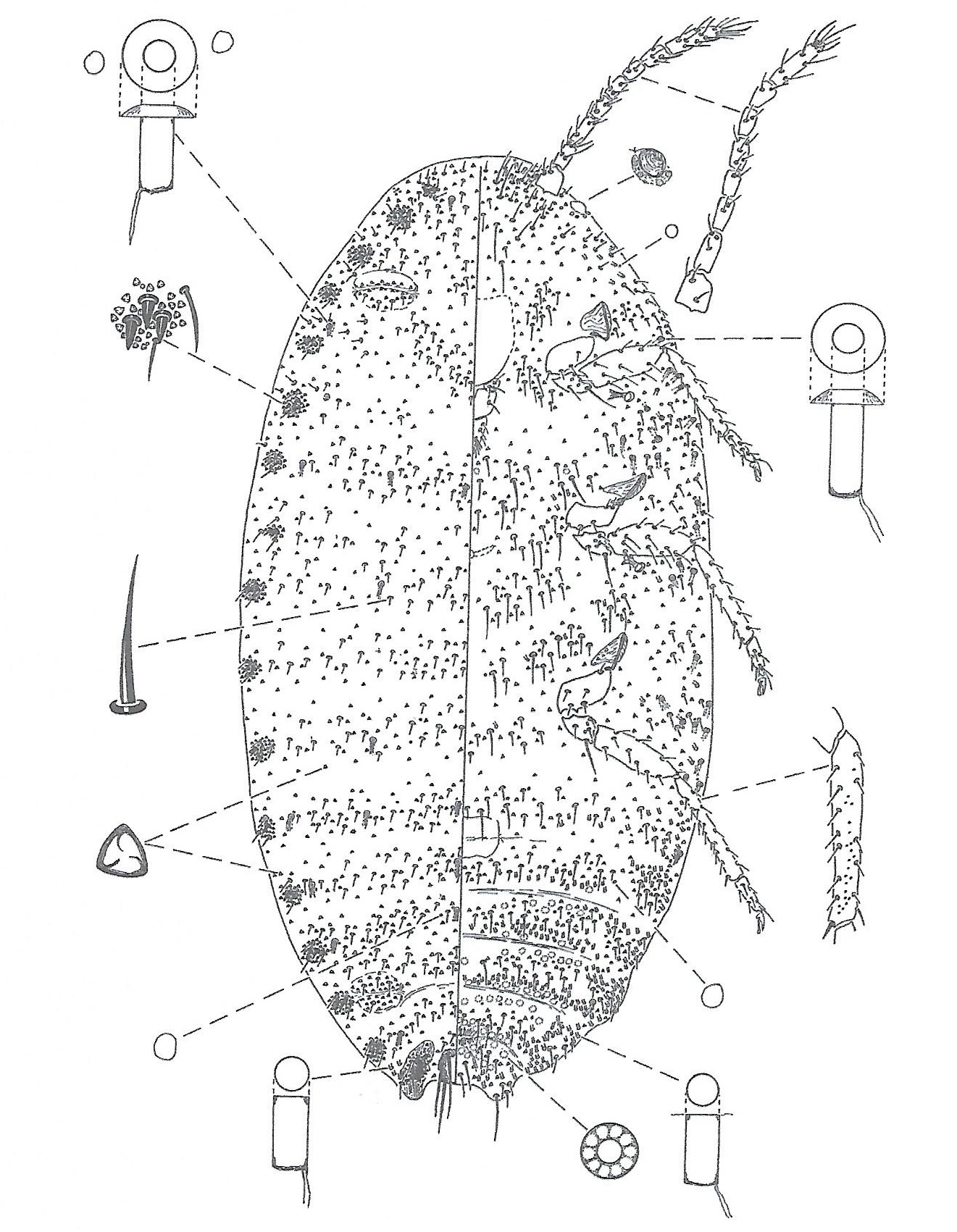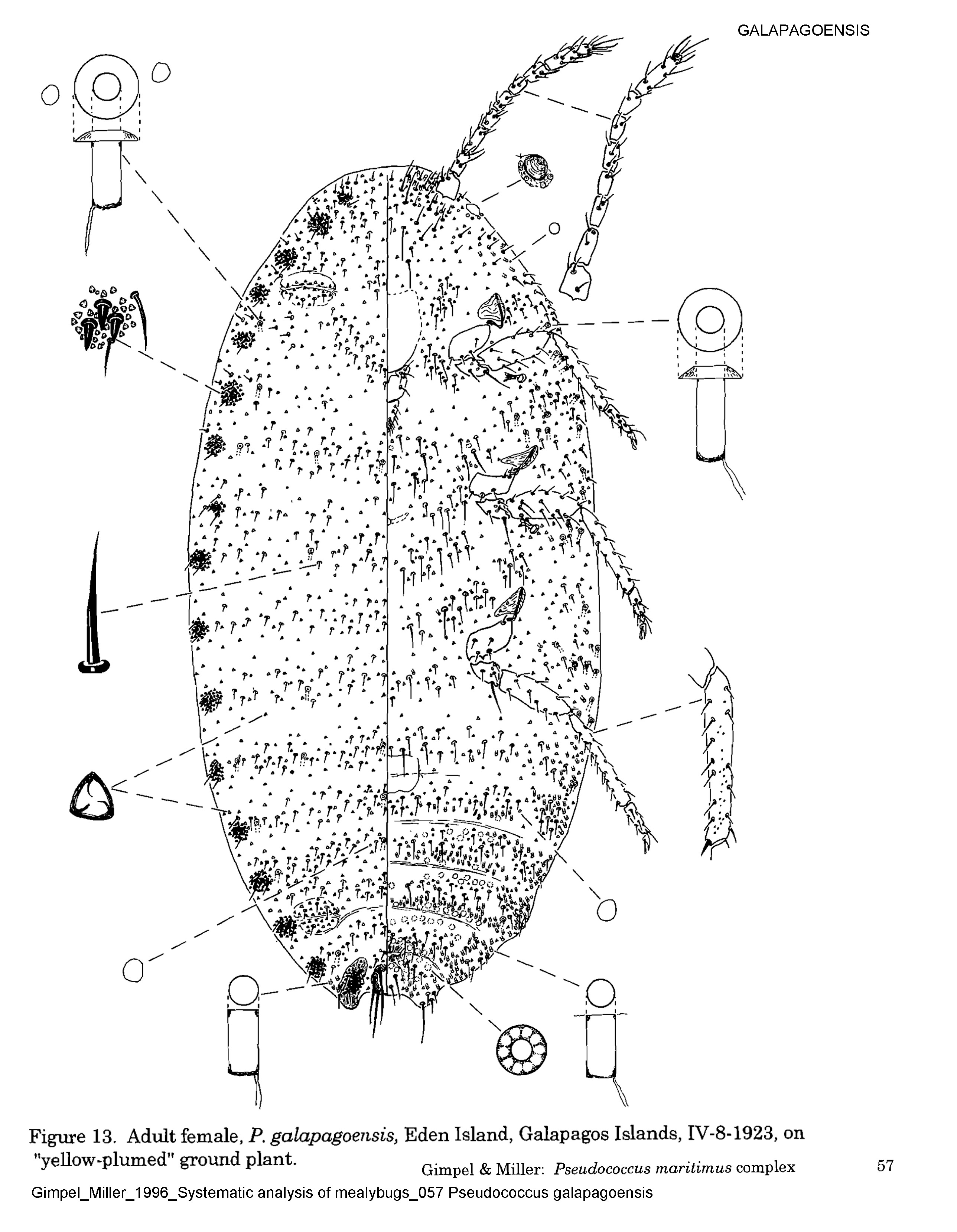Valid Names Results
Pseudococcus galapagoensis Morrison, 1924 (Pseudococcidae: Pseudococcus)Nomenclatural History
- Pseudococcus galapagoensis Morrison 1924a: 148. Type data: ECUADOR: Galapagos Islands, Eden Island, N.W. coast of Indefatigable, on ground plant. Holotype, female, Type depository: London: The Natural History Museum, England, UK; Washington: United States National Entomological Collection, U.S. National Museum of Natural History, District of Columbia, USA; accepted valid name Illustr.
Common Names
- Galapogos mealybug GimpelMi1996
Ecological Associates
Geographic Distribution
Countries: 1
- Galapagos Islands | BenDov1994 GimpelMi1996 LincanHoCa2010 Morris1924a
Keys
- GranarGo2018: pp.10-14 ( Adult (F) ) [Central & South American Pseudococcus]
- VonEllWa2016: pp.77 ( Adult (F) ) [Pseudococcus species present in the New World]
- GimpelMi1996: pp.18 ( Adult (F) ) [World]
Remarks
- Systematics: Pseudococcus galapagoensis is similar to P. jackbeardsleyi by having a sclerotized rim around the eye, several discoidal pores near each eye, and more than 10 oral rims on the ventral submargin between segment II and cerarius 13. Pseudococcus galapagoensis differs by having: Multilocular disc pores often with less than 10 loculi; translucent pores absent from hind femur; several ventral oral rims near frontal cerarius; 3(2-5) oral collars in cluster mesad of cerarius 12; 3(2-5) oral collars associated with cerarii 10 and 11; longest interantennal seta length 85 (78-105)µ long. Pseudococcus jackbeardsleyi has: Multilocular disc pores usually with 10 or 12 loculi; translucent pores on hind femur; no ventral oral rims near frontal cerarius; 9(4-20) oral collars in cluster mesad of cerarius 12; 8(2-15) oral collars associated with cerarii 10 and 11; longest inter antennal seta length 116(102-129)µ long. (Gimpel & Miller, 1996)
- Structure: Many multilocular disc pores with 7 or 8 locules; 22(17 -25) oral-rim tubular ducts on ventral submargin between segment II and cerarius 13; oral-rim tubular ducts on ventral submargin of segments II-VI; translucent pores restricted to hind tibiae. (Gimpel & Miller, 1996)
- Biology: Occurring on the roots of its host plant.
- General Remarks: Good description and illustration of the adult female given by Gimpel & Miller (1996). No specimens were available for Williams & Granara de Willink (1992) revision of mealybugs of South America.
Illustrations
Citations
- BenDov1994: catalog, 391-392
- GimpelMi1996: description, distribution, host, illustration, taxonomy, 56-59
- GranarGo2018: diagnosis, distribution, host, key, 10-14, 29
- LincanHoCa2010: distribution, host, 6
- Morris1924a: description, distribution, host, illustration, taxonomy, 148-150
- VonEllWa2016: distribution, host, key, morphology, structure, 74-82
- WilliaGr1992: distribution, host, taxonomy, 447




